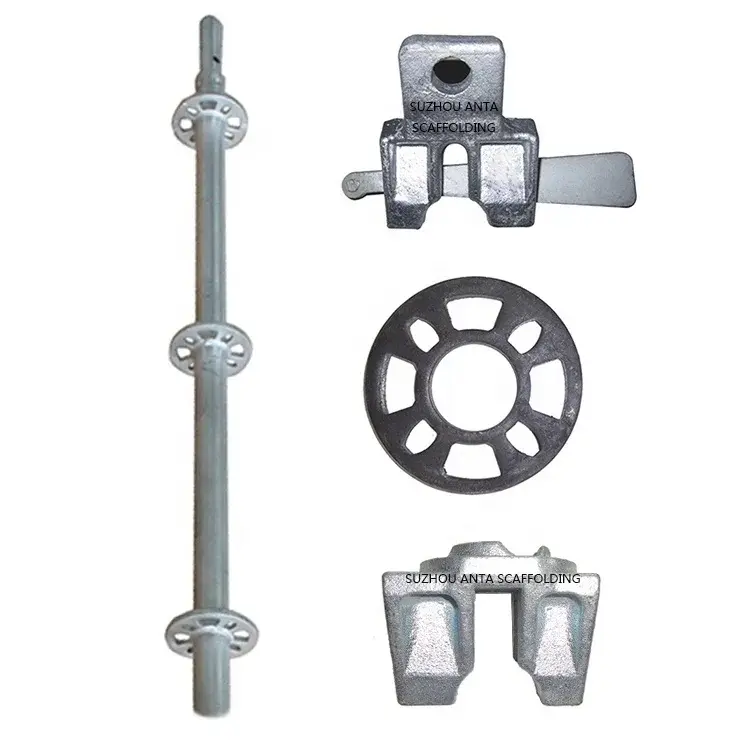Scaffold Tower Vs. Work Platform: What’s The Difference?
When it comes to working at heights, having the right equipment is crucial to ensure safety and efficiency. Two common options for working at elevated heights are scaffold towers and work platforms. Both options have their unique features and benefits, but it's essential to understand the differences between the two to choose the right one for your specific needs.
Scaffold Tower: Overview and Uses

A scaffold tower is a temporary structure used to provide a safe working platform for workers at height. It consists of various components, such as frames, platforms, and guardrails, which can be assembled and disassembled easily. Scaffold towers are commonly used in construction, maintenance, and renovation projects where workers need to access elevated areas safely.
Scaffold towers offer a stable and secure platform for workers to perform tasks at various heights. They provide ample space for tools and materials, allowing workers to move around freely while completing their tasks. Additionally, scaffold towers are customizable and can be adjusted to different heights and configurations, making them versatile for different project requirements.
One of the key advantages of scaffold towers is their flexibility and adaptability. They can be easily moved to different locations on the worksite, providing access to multiple areas without the need for dismantling and reassembling. This feature makes scaffold towers an efficient and cost-effective solution for projects that require frequent relocation of work platforms.
Scaffold towers are available in various sizes and designs to suit different project requirements. Some scaffold towers are equipped with wheels for easy mobility, while others are designed for indoor use in confined spaces. The height of scaffold towers can be adjusted by adding or removing components, making them suitable for a wide range of applications.
Work Platform: Overview and Uses
A work platform, also known as a mobile elevated work platform (MEWP), is a type of equipment used to provide temporary access to elevated areas. Unlike scaffold towers, work platforms are typically self-propelled or mounted on a vehicle, allowing them to be easily maneuvered to different locations on the worksite. Work platforms are commonly used in construction, painting, maintenance, and other industries where workers need to reach heights safely and efficiently.
Work platforms come in various types, including scissor lifts, boom lifts, and vertical mast lifts, each designed for specific applications and height requirements. Scissor lifts are commonly used for indoor maintenance tasks, while boom lifts are ideal for outdoor construction projects that require access to hard-to-reach areas. Vertical mast lifts are compact and lightweight, making them suitable for working in tight spaces.
One of the key advantages of work platforms is their mobility and accessibility. Work platforms can be easily transported to different locations on the worksite, allowing workers to access elevated areas quickly and safely. The self-propelled feature of work platforms enables operators to move smoothly around the worksite, increasing productivity and efficiency.
Work platforms offer a safe and stable working platform for workers at heights. They are equipped with safety features such as guardrails, harness attachment points, and emergency descent systems to protect workers from falls and other hazards. Work platforms are designed to comply with safety regulations and standards to ensure the well-being of operators and workers.
Key Differences Between Scaffold Towers and Work Platforms
While scaffold towers and work platforms serve similar purposes of providing access to elevated areas, there are key differences between the two that make them suitable for different applications. Understanding these differences can help you choose the right equipment for your specific project requirements.
1. Structure and Design: Scaffold towers are temporary structures consisting of frames, platforms, and guardrails that can be assembled and disassembled easily. Work platforms, on the other hand, are self-propelled or mounted on a vehicle, allowing them to be easily moved to different locations on the worksite.
2. Mobility and Accessibility: Scaffold towers are stationary structures that need to be dismantled and reassembled to move to different locations on the worksite. Work platforms are mobile and can be easily transported to various areas, providing quick and safe access to elevated heights.
3. Height and Reach: Scaffold towers can be adjusted to different heights by adding or removing components, making them suitable for various height requirements. Work platforms come in different types and sizes, each designed for specific applications and height restrictions.
4. Versatility and Adaptability: Scaffold towers are versatile and can be customized to different configurations and heights to suit project requirements. Work platforms are designed for specific applications and have limitations in terms of height and reach.
5. Safety Features: Both scaffold towers and work platforms are equipped with safety features such as guardrails, harness attachment points, and emergency descent systems to protect workers at heights. However, work platforms are designed for mobility, making them safer and more efficient for accessing elevated areas.
Choosing the Right Equipment for Your Project
When deciding between a scaffold tower and a work platform for your project, it's essential to consider your specific requirements, such as the height of work, mobility needs, and safety regulations. Here are some factors to consider when choosing the right equipment for your project:
- Height and Reach: Determine the maximum height and reach required for your project tasks to choose the equipment that can provide safe access to elevated areas.
- Mobility and Accessibility: Consider the mobility needs of your project, such as the need to move between different areas on the worksite, to determine whether a scaffold tower or work platform is more suitable.
- Safety Features: Ensure that the equipment you choose complies with safety regulations and standards to protect workers from falls and other hazards while working at heights.
- Project Requirements: Assess the specific requirements of your project, such as the type of tasks to be performed, working conditions, and environmental factors, to determine the most suitable equipment for the job.
By understanding the key differences between scaffold towers and work platforms and evaluating your project requirements, you can choose the right equipment to ensure safe and efficient work at heights. Whether you opt for a scaffold tower or a work platform, prioritizing safety and compliance with regulations is essential to protect workers and ensure project success.
In conclusion, scaffold towers and work platforms are valuable equipment for working at heights, each offering unique features and benefits for different applications. Scaffold towers provide a stable and secure working platform that can be customized to various heights and configurations, while work platforms offer mobility and accessibility to reach elevated areas quickly and safely. By considering the specific requirements of your project and the key differences between scaffold towers and work platforms, you can choose the right equipment to meet your needs and ensure a successful outcome. Remember to prioritize safety and compliance with regulations when working at heights to protect workers and promote a safe working environment.

